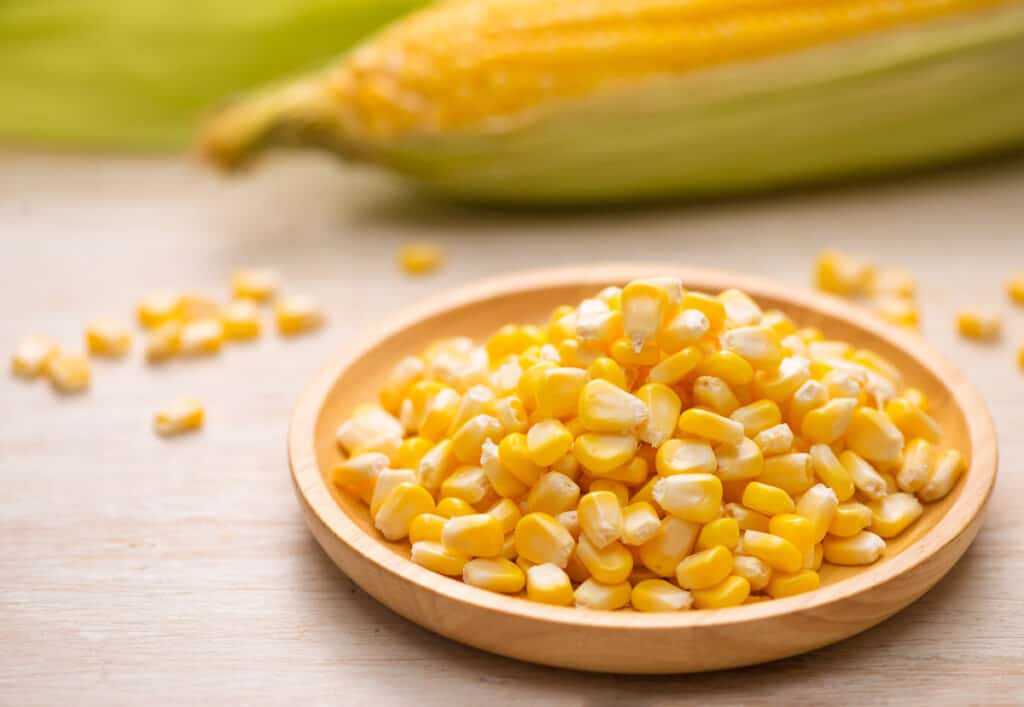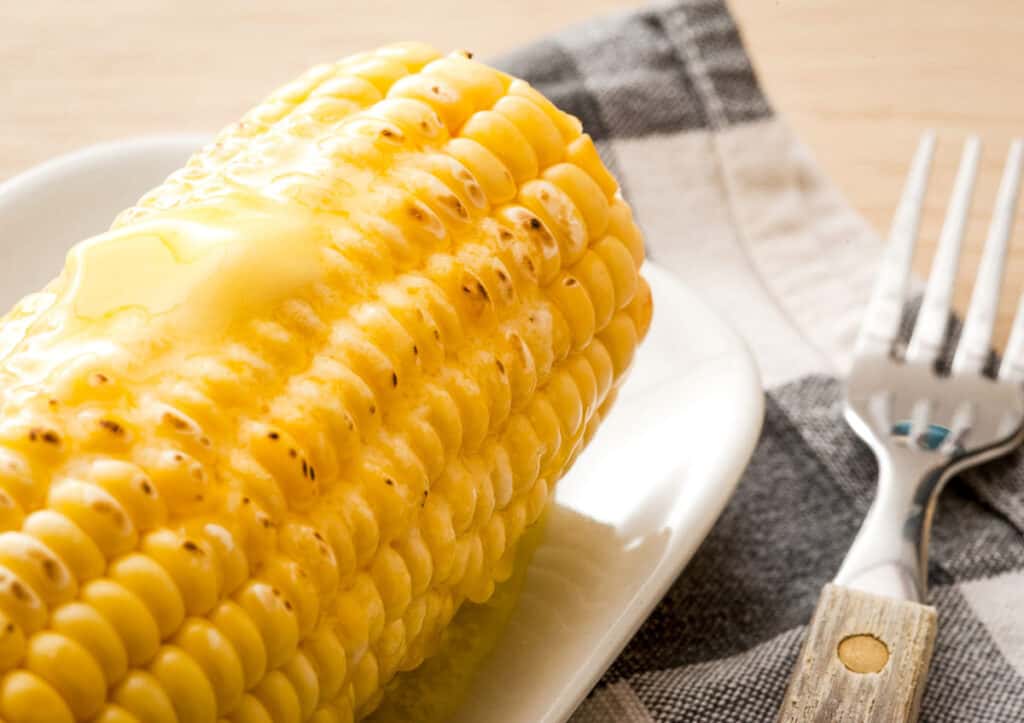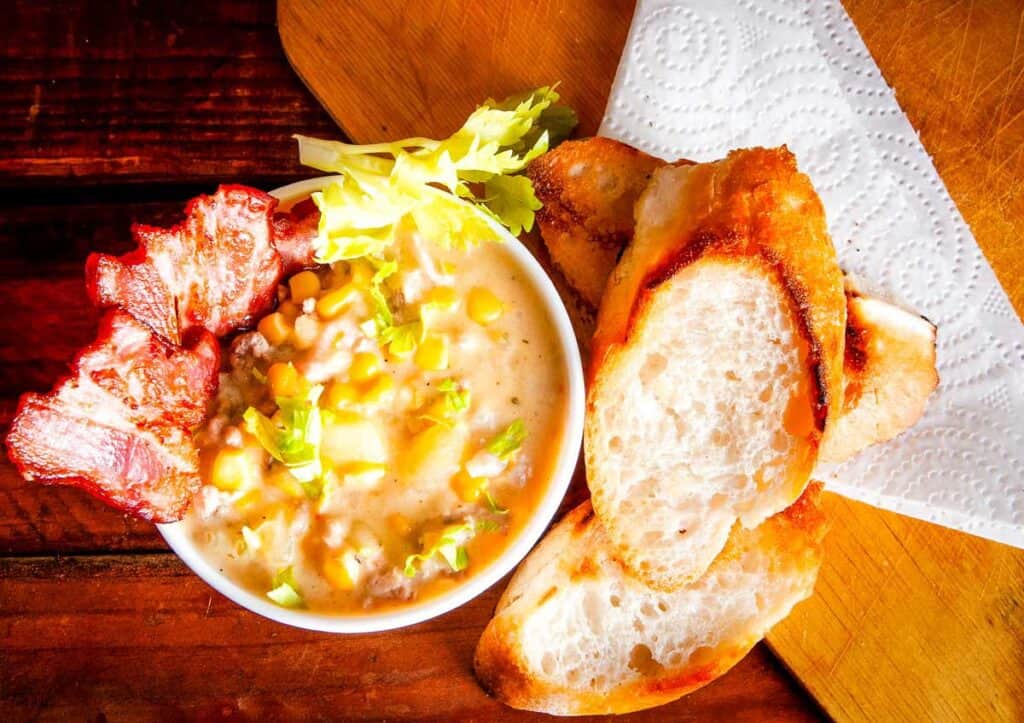Biting into a juicy, tender-crisp, sweet ear of corn on the cob in the peak of summer is a thing of beauty. But what happens to your remaining corn when the season ends? Freezing corn on the cob is an easy and effective way to preserve the flavor and texture of this summertime favorite.

Freezing corn on the cob
There are three simple ways to freeze corn that will prolong the life of your crop, allowing you to enjoy a delicious taste of summer well into the winter months. Follow the easy steps outlined below for perfect frozen corn.
Method 1: Whole Frozen Corn on the Cob
Step 1: Shuck the corn first — that is, remove the green and white husk surrounding the corn on the cob, as well as any strands of corn hair.
Step 2: Add the corn to a pot of salted boiling water in order to blanch the corn. Cook the corn for two to three minutes, then remove with a set of tongs. Submerge in a bowl of ice water.
Step 3: Remove from the water bath, and let the corn drain and cool. Dry well with paper towels to maintain the corn’s texture as it freezes, then wrap each cob in plastic wrap to avoid freezer burn and place in a plastic freezer bag, removing as much air as possible before sealing. Freeze the whole cob for later use.
Alternatively, you can remove the kernels from the cob once they have cooked and cooled, then freeze the corn kernels in a freezer-safe bag.

FDL’S 75 Best Bites

Our cookbook with 75 tasty recipes will be your go-to kitchen companion for easy dinners with ad-free recipes right at your fingertips. Crafted by experienced chefs and recipe developers, this collection offers a treasure trove of tried-and-true dishes that make mealtime a breeze.
Get the Recipe: FDL’S 75 Best Bites
Method 2: Blanched Corn Kernels
Step 1: In this method, remove the corn from the cob. It’s helpful to hold the corn upright, place it in a bowl, and then cut in a downward motion into the bowl with your kitchen knife. This way, the bowl will catch the kernels as they fall off of the cob.
Step 2: Then, blanch the corn kernels in salted water for about two minutes. Remove the corn kernels with a spider strainer or strain them in a colander in the sink.
Step 3: Pat the corn dry, let it cool, then freeze it in a plastic freezer bag as above.
Method 3: Unblanched Corn Kernels
Step 1: To freeze fresh corn kernels without blanching them first, cut the corn off of the corn cob and add the kernels to a plastic freezer bag or freezer-safe silicone bag, removing as much air as possible from the bag before storing.
Step 2: Place in the freezer.
How to reheat and serve frozen corn
Each variety of frozen corn should be treated differently based on its specific freezing method.
Whole frozen corn on the cob
This can be used directly from the freezer. Just boil a pot of water, add the frozen whole corn on the cob, and boil for about five minutes. The corn is ready to eat when a kernel easily ruptures with gentle pressure from the tip of a paring knife.
The corn can be served simply with butter, salt, and pepper, or removed from the cob and added to a variety of dishes. It would also be wonderful garnished with fresh herbs like cilantro or basil.

Blanched frozen corn kernels
Blanched corn kernels can be microwaved on high with a few tablespoons of water for about two minutes, or until heated through. This method can be used for blanched frozen corn kernels that were first cooked on the cob and then removed as well.
This method is closest to the frozen corn you’ll find in the frozen section at the grocery store, which is already cooked and just needs reheating. You can use it as you could fresh cooked corn, in salads, burritos, grain bowls, wraps, salsas, or just as a side dish with a bit of brown butter.
“Frozen corn is a staple we keep in our freezer all year round. It’s incredibly helpful to have for a variety of ways we repurpose leftovers, such as creating burritos and enchiladas with leftover meat. Plus, frozen corn retains more of the nutritional value versus canned!”
— Siobhan Borland, Fun Family Meals
Unblanched frozen corn kernels
For unblanched kernels, add them to a pot of salted, boiling water and cook for three to five minutes, or until warmed through.
Fresh corn that’s been frozen using this method will remain fresh for up to 12 months in the freezer, but will not maintain its crisp texture. It’s recommended that this type of corn be used in preparations where the texture will not matter as much, such as soups and stews.
“In the summer, I like to buy extra corn on the cob from the farmers market. I cut the kernels off and freeze them in bags, which I pull out later for side dishes or to add to my favorite tortilla soup recipe.”
— Susannah, Feast + West, feastandwest.com

Final thoughts
Whether freezing corn on the cob whole, blanching corn kernels, or storing corn in the freezer without blanching, the life of this treasured summer crop can be prolonged with a few simple steps.
Be sure to consider the freezing method you’ve chosen when deciding how to prepare the frozen corn. For a whole cob, a simple preparation is easy and delicious. For blanched frozen kernels, a fresh preparation like a salad, salsa, or wrap would be excellent, as this corn will maintain its texture through the freezing process. With unblanched kernels, the texture will be a bit softer, so try to use this type of corn in soups and stews.
Gen is a professional chef, writer and editor living in Southern California. She is the owner and recipe creator behind Two Cloves Kitchen, a food site featuring contemporary, California-inspired recipes. She has edited over 20 novels, short stories and essays for publication.